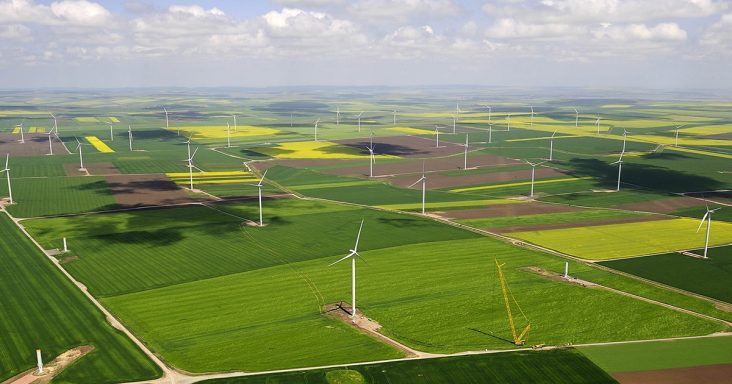Wind, solar to comprise 76% of new generating capacity in 2020
by January 15, 2020 9:14 am 760 views

The U.S. power sector is expected to add 42 gigawatts of electricity generating capacity in 2020, and 76%, or 32 gigawatts, of this capacity is expected to come from solar and wind energy sources, according to the U.S. Energy Information Administration. Wind is expected to comprise 44% of the capacity, followed by solar and natural gas at 32% and 22%, respectively. The remaining 2% will come from hydroelectric generators and battery storage.
A record level of wind capacity is expected to start operating in 2020. Operators expect 18.5 gigawatts of wind capacity to start operating this year, surpassing the record level of 13.2 gigawatts set in 2012. More than 60%, or 11.2 gigawatts, of wind capacity is set to start operating in November and December.
The expiration of the U.S. production tax credit at the end of 2020 is contributing to the large addition of wind capacity this year. The ending of the tax credit also led to a rise in the addition of wind capacity in 2019, in which 11.8 gigawatts of capacity were added. Five states will account for more than half of the new capacity in 2020. Texas will comprise 32%, followed by Oklahoma at 6% and Wyoming, Colorado and Missouri, with 5% each.
A record level of solar capacity is expected to start operating in 2020. The addition of 13.5 gigawatts of solar capacity will surpass the previous annual record of 8 gigawatts in 2016. More than half of the utility-scale electric power sector solar photovoltaic capacity additions will be in four states: Texas, 22%; California, 15%; Florida, 11%; and South Carolina, 10%. New distributed photovoltaic, or rooftop systems, are expected to contribute to growth in the residential and commercial sectors. An additional 5.1 gigawatts of small-scale solar photovoltaic capacity is expected to come online by the end of 2020.
Natural gas capacity is expected to rise by 9.3 gigawatts in 2020. Combined-cycle plants will account for 6.7 gigawatts, and combustion-turbine plants will comprise 2.3 gigawatts. More than 70% of the additions will be in Pennsylvania, Texas, California and Louisiana.
Of the 11 gigawatts of capacity that will be retired in 2020, 51% will comprise coal, 33% will be natural gas and 14% will be nuclear. Smaller renewable, petroleum and hydro capacity will account for the remaining 2% that will be retired this year.
